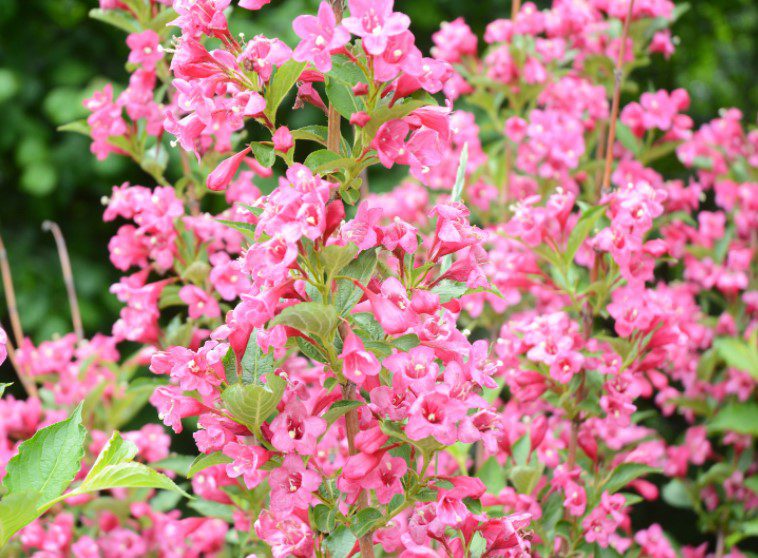Weigela Information
Weigelas are deciduous woody shrubs commonly used as fillers in shrub borders. They are also grown as freestanding shrubs or informal flowering hedges.
Their flowers are produced in late spring to early summer and sometimes intermittently in late summer to autumn. These come in yellow, white, pink, or red shades and are borne on short, lateral twigs on two-year-old branches.
As a member of the Caprifoliaceae family, the flowers are funnel-shaped like honeysuckle, and some, such as W. ‘Praecox Vanegata’ Award of Garden Merit (AGM). Are mildly honey-scented.
The plants range in height, from 90cm-tall dwarf species like W. ‘Pink Poppet’ to the white-flowered IV. Florida ‘Bristol Snowflake’. Which reaches 2m or more at maturity.
The most popular varieties have purple leaves that add further splashes of color throughout the season. An old favorite is W. flor/da’FoliisPurpureis’AG M. with pink flowers. W. Naomi Campbell (also called’Bokrashine’) is a stunning new purple-leaved plant with bright red flowers.
Variegated forms like the newly introduced W. Florida Monet, with pink-tinged green and white foliage, are popular with growers who also recommend older favorites like W. ‘Florida Variegata’ AGM.
Smaller cultivars like W. Florida ‘Tango’ are also recommended for containers as they have an elegant, compact, and bushy habit. A spin-off is that they make good retail plants as they display well.
One of the critical reasons landscapers use them is their ease of cultivation – they grow in acid or alkaline soil as long as it is reasonably fertile. Powdery mildew seems to be the only mild concern, but this can be reduced with a fungicide.
Weigelas are pruned after flowering in spring. On established plants, thinning old branches promotes fresh-flowering wood and stops them from becoming woody and top-heavy.
The yellow-leaved or variegated varieties prefer partial shade, while the others have better leaf coloring and flower well when planted in full sun.
The plants propagate freely from semi-ripe or hardwood cuttings.
How to Grow Weigela
It is essential to know the mature size of the bush before you plant it. Also, make sure there is enough space in your landscape to allow for total growth. Roots require room to grow, so only a limited pruning is necessary to reach their full potential.
Florida variety can grow to 10 feet (3m.) high and 10 feet (3m. wide) around. If you plant the shrub in a 2 Gallon (8 L) pot, leave enough room for it to spread.
For the best springtime blooms, plant Weigela in full sun. You can also plant Weigela in partial shade. Although flowering won’t be as prolific, there will still be plenty of blooms.
If you consider where to grow Weigela in your area, make sure it is well-drained and moist.
The majority of Weigela cultivars are best when they flower; you can include them in mixed borders along with other shrubs that offer seasonal interest.
Weigela Care
Pruning for shape is an essential part of Weigela care. To improve the shrub’s strength and bloom next year, mature bushes can be helped by removing older interior branches in the winter.
After the spring bloom, it can be given light pruning to improve its shape. As part of plant maintenance, Weigela should only be fertilized once per year. Springtime flowers can be encouraged by feeding your plants a balanced, regular diet in the winter.
There are many Weigela dwarf cultivars. Smaller plants require less care and require less space for growth. The dwarf varieties can be grown in containers and will decorate your entire sun area with beautiful blooms.
The care of dwarf Weigela is the same as that for regular specimens. Regular watering is necessary for both container- and ground-planted Weigela specimens.
Weigela can provide long-lasting blooms for your landscape.


























